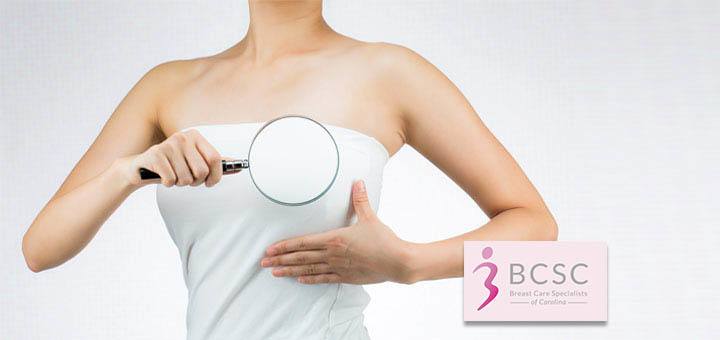
BENIGN BREAST DISEASE: WHEN THE LUMP IN YOUR BREAST IS NOT CANCER
Since you can’t tell from the surface whether a breast lump is cancerous or not, it’s important to see your doctor right away for diagnostic tests. Mammograms and breast ultrasound are the best methods for your doctor to distinguish between benign and malignant tissues, as well as determine the need for biopsy.
This month, we’re talking about the most common benign breast diseases, including cysts and fibroadenomas. We’ll look at risk factors, diagnosis, and treatment.
BREAST CYSTS
The best modality for diagnosing a fluid-filled growth is an ultrasound. If your doctor is confident that the lump is a cyst and it is small and not causing you any pain, then no treatment is necessary. Most cysts resolve on their own over time as your body reabsorbs the fluid. However, if it continues to grow or causes pain, we can perform a simple in-office procedure called a fine needle aspiration to drain the fluid and relieve the pressure.
Some women never get breast cysts, while others have cysts come and go many times throughout their lives. Cystic issues can be hereditary, but a family member doesn’t have to have a history of breast cysts for you to experience one. The Mayo Clinic estimates that nearly half of all women will develop fibrocystic change, which is a conglomerate of cysts, at some point in their lives.
Many women find that caffeine worsens cyst pain, so those with fibrocystic breast disease may want to avoid caffeinated drinks. It’s important to note that caffeine doesn’t cause fibrocystic change, but it can aggravate the symptoms in some women.
If you ever have questions about whether a lump in your breast is a cyst, see your trusted doctor for diagnosis and treatment.
FIBROADENOMA
Fibroadenomas are estrogen-dependent, so they’re more common in pre-menopausal women because they produce more estrogen than post-menopausal women. There isn’t usually a familial pattern to fibroadenomas, but having one may increase your likelihood of developing another in the future.
In most cases, your doctor will document the lump and monitor it over time. There’s no need for intervention if the fibroadenoma is relatively small, not growing or causing pain. However, if the lump continues to grow, causes pain, or creates a cosmetic issue, you can see a breast surgeon to have it removed.
OTHER COMMON TYPES OF BENIGN BREAST DISEASE
A common cause of fat necrosis is when women are in car accidents and sustain damage from the seatbelt. As their breast tissue decays, it develops an oily consistency that can mimic the appearance of cancer on diagnostic imaging. Usually, a physician can distinguish between fat necrosis and a potential cancerous lump by assessing patient history and performing a tissue biopsy.
In most cases, the problem resolves itself over time as your body clears the damaged tissue. Fat necrosis does not usually cause pain, but the entire area surrounding the breast lump may be tender from the initial trauma.
Another benign breast tissue problem is an intraductal papilloma, which is a little polyp on the inside of the milk ducts in the breast. Most of the time, these lumps are benign. However, your doctor will likely remove them because they can cause bloody nipple discharge and can be associated with papillary breast cancers. Because of all of this, your doctor may want to remove the polyps to be sure that they’re not accompanying cancer.
DENSE BREAST TISSUE
If you’re performing your monthly breast self-exam and you can’t tell if your breasts are healthy, schedule an appointment with your doctor. He or she can perform an ultrasound, assess your breast health, and help you get to know your typical breast texture.
Dense breast tissue does not necessarily increase your risk for developing breast cancer, but it can make it more challenging to find abnormal lumps because they can hide out among the healthy, “normal” lumps. If you ever have any questions about whether a bump is healthy, it’s always best to schedule an appointment with your doctor.
As women age, their breast tissue tends to become fattier, which has both positive and negative side effects. Breasts with more fatty tissue tend to sag, but it’s also much easier to find abnormal lumps while performing a physical exam or with diagnostic imaging tests, such as a mammogram.
STILL HAVE QUESTIONS?
Phone: 704-769-3800 | Fax: 949.404.8311
